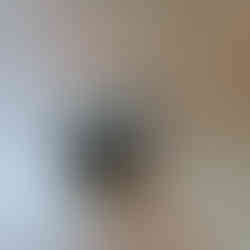CNC machining is a great way to produce products. It has relatively low upfront investment costs and scales well. CNC manufacturing is useful for prototyping and manufacturing production quantities alike.
There are fixed initial costs like tooling, CAM programming, fixture design. These costs are distributed over the total quantity of parts. Thus a single prototype part can be considered expensive as it includes all of the startup costs. Increasing the part quantity quickly distributes cost.
CNC price per part or unit price is mostly based on the machining time of the part.
Here are 10 things to consider during the part design process that can reduce machine time and manufacturing costs.
Optimize Material Choice:
Purchasing application-specific materials can reduce costs. Materials with better machinability will reduce the required machining time and simplify the machining process. Using softer materials like aluminum over stainless steel will greatly reduce machining time.
Avoid exotic materials like titanium and magnesium, they are expensive and often require special tools and equipment.
Design for 3 axis machines:
3 axis machines have a lower cost per hour versus 4 and 5 axis machines. Designing parts that are machinable from a single face can be produced in a single setup on a 3 axis machine. Machining from additional faces will require secondary operations and additional setups.
Secondary operations require the machine to be stopped and parts are manually repositioned or moved to another machine. Reducing setups can have a significant impact on overhead costs like labor. If the part requires machining from different faces complex geometries, 4 and 5 axis machines should be used to eliminate the need for multiple setups. 4 and 5 axis machines are more expensive per hour than 3 axis machines.
A good example of this is swiss machining, where the entire cycle of a part can be completed on a single machine, without the need of additional machine setups.
Avoid Deep Pockets and Cavities.
Pocket depth should be less than four times its width. Standard tools can cut depths at three to four times their diameter. Deep narrow pockets will require longer smaller diameter tools. Long thin tools will experience higher tool deflection rates than their thicker counterparts. Resulting in surface imperfections. Another consideration is chip removal. Chips and coolant may pool at the bottom of the cavity and may cause imperfect finishes.
Add a 3MM or Greater Internal Radius:
Rather than trying to make a perfectly square corner use a 3mm or larger common internal radius on internal features to reduce cost. Having internal features with the same radius will reduce the number of tools needed. It also simplifies the CAM programming process. A good idea is to specify the internal radius to be one-third the depth of the cavity.

Larger internal radii are faster to machine and can be machined with larger machine tools. A larger corner radius allows the machine to continue its feed rate rather than slow down or stop for directional changes. In a 90 degree angled corner a tool will engage with nearly half of its diameter. This causes much higher stresses than a gradual angle. Imperfections caused by chatter may require another tool pass. Additionally, larger radii reduce tool engagement and stress extending tool length.

Allow for a radius on the cavity bottom to sidewalls, the larger the radius the larger the tool can be used, reducing tool changes and additional passes. This also enables the use of ball nose tools which provide a finer surface than end mills.
Use Undercuts in Sharp Angles:
CNC machines can not mill perfectly squared internal corners, regardless of tool size there will always be a small radius. Rather than trying to get a perfectly square corner for inserting a square part, use corner undercuts. A one-sided undercut is a cut-out that follows the length of the internal pocket. Two-sided undercuts can be holes 2 milled on each axis or drilled centered on the square corner. Undercuts remove corner radius allowing parts with squared corners to be inserted or mated.

The term undercut is also used for removing material under a surface not directly accessible from the spindles center point. In this case, a mill cannot be used, a ball head or undercut tool is used. This type of undercut requires special considerations and if possible should be avoided. Imagine a T or V slot.
Use Standard Hole Sizes for Drilling and Tapping:
Standard size holes will allow machinists to use commonly sourced drills, thereby keeping the tooling prices minimum. Using the same drill size throughout the machining process reduces tool costs and tool changes. If your hole requires a custom diameter size then a mill will be used with a circular/helical pattern, greatly increasing machining time.
There is little benefit of having threads deeper than three times diameter so it is an optimum length to stop at. Tapping long holes can lead to lost time and possible tool breakage. Smaller hole diameters are sometimes tapped by hand; consider this when designing parts. On blind holes, it’s best practice to add half of a tool's diameter to the bottom of the hole.
It’s also important to choose a common tap size like 4-40 as these tools are easily sourced. For uncommon or large thread sizes, thread milling can be introduced but it increases machining time.
Avoid Thin Wall Parts:
Consider the thickness of material walls. Parts are considered thin if they are less than .5mm for metal parts .8mm and below for plastic parts. Workpieces with thin walls require reinforcement or additional fixturing to properly machine as they tend to vibrate creating tool chatter and poor surface finishes. Consider the diameter of the hole when drilling near the sides of parts, it's possible to unintentionally create thin walls. Consider designing parts with less than a four-to-one height-to-width aspect ratio.

Limit Tight Tolerances:
Unnecessary and tighter than needed tolerances can quickly drive up the production price of CNC parts. Using standard tolerances such as +/- 0.125 mm /0.0005" for not critical or non-mating parts is sufficient. Avoid tight tolerances on the inside of internal features as they are both difficult to machine and measure accurately.
Tight tolerances require small tools run at lower speeds and feed rates or a often several passes, operations or a trip to the grinding machine. Larger finishing tools reduce the number of passes a machine has to take resulting in considerable time savings over a production run.
Tight tolerances also require the quality control/assurance team to use higher accuracy tools. This adds cost and will also cause an overall slowdown in production depending on available equipment. Consider decimal points .00 on handheld gauges or calipers vs .000 on Coordinate Measuring Machines.
Consider Using a Mold.
One of the main benefits of CNC manufacturing is that it does not require molds. However, while molds for extrusion, die casting, and forging can be expensive, you can drastically reduce machining costs by using CNC machining as a finishing process. Base molds would contain the major features and pockets. CNC machining would be used for drilling holes, tapping, tightening tolerances, or finishing surfaces. This is feasible and recommended on larger or high production parts or parts requiring a lot of material to be removed. Using presses for feature imprinting is also and option.
Manufacture in Taiwan:
Consider manufacturing CNC parts in Taiwan. CNC machining rates in Taiwan are considerably lower than the United States. Taichung has a large manufacturing supply chain, this includes material supply and finishing processes. Having access to a large centralized supply chain aids in the reduction of manufacturing costs due to transportation or logistics. It's also the home to many CNC machine manufacturers and has close proximity to a international shipping port. Taichung, Taiwan is often referred to "The heart of bicycle parts manufacturing."

















Comments